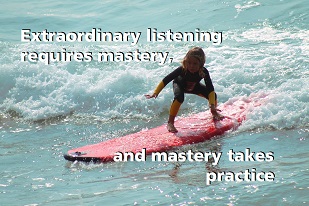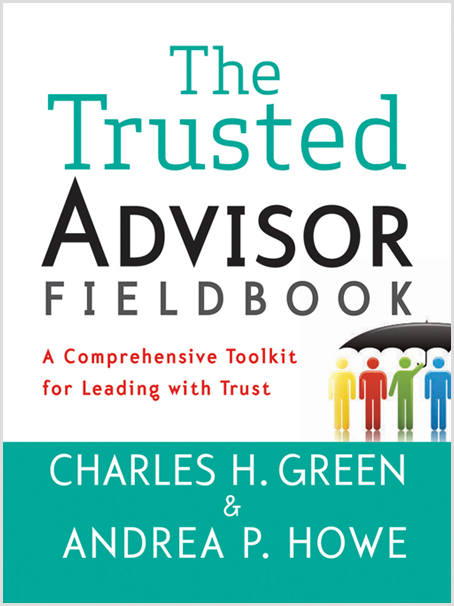This post is part of our Weekly Tips series.

Listen, listen, listen. I harp on it all the time in our programs and in these weekly tips. It’s a critical skill for anyone endeavoring to be a trusted advisor. And I don’t care how adept you think you are as a listener, there’s always room for improvement.
Here’s a listening challenge that I use in my advanced workshops: See if you can listen to someone for four minutes without asking a single question.
Say what?
That’s right—not a single question (other than the one you might have to ask to get the conversation going—although even then, there’s a way around it).
“But wait!” you may have just exclaimed, “Then we’ll just be sitting awkwardly in silence so I’ll have nothing to listen to.” Or perhaps you’re wondering, “How am I supposed to show my stakeholder that I’m interested/curious/paying attention if I don’t ask a question?”
Those are legit concerns. To address them (and any others you might have), here are seven alternatives to asking questions, in no particular order. All seven can paradoxically (1) yield far more openness and sharing on the part of the person you’re listening to, and (2) convey considerably more interest on your part. Think of them as listening mastery moves:
- Paraphrase. Reflect back the facts. “If I’m hearing you, your three biggest concerns are X, Y, and Z.”
- Empathize. Tune in to the feelings that are being conveyed (which are sometimes obvious and sometimes not), not just the facts. “That sounds like a real source of frustration.”
- Give non-verbal cues. Things like head-nods and lean-ins can be great conversation encouragers—even when you can‘t see each other.
- Use audible pauses. You can say things like, “Mhmm,“ “hmmm“ or make (judicious) “grunting“ sounds. Don‘t be weird about it. Just bring forward what you naturally do when you‘re really paying attention.
[Tweet “Think you’re a great listener? Try this. #getreal #communication”]
- Say nothing. Silence is usually awkward for the listener. It can be a welcome respite for the listen-ee. Manage yourself in such a way that you don‘t give into the need most of us feel to fill every single moment of the conversation with something. Taking a few deep breaths usually helps.
- “Tell me more.” This is one of my favorite open-ended listening prompts. Not, “Tell me more about XYZ,“ just “Tell me more.“ (By the way, this makes the list because it‘s technically a statement and not a question.)
- “I‘m not sure what to say.” If you‘re stumped and don‘t know what to say next—either because they’ve just opened up in an unexpected way, or because you can‘t figure out how not to ask a question, it‘s ok to say just that.
This challenge generally assumes you’ll engage with someone with whom you can have a “meaty” conversation—i.e. a client you’re working with, or a new contact you’re interested in getting to know (and who is interested in engaging with you). Don’t try this with the grocery store clerk in the checkout line as you probably won’t get very far. Then again, maybe you will. Allow yourself to be surprised.
Let’s be clear: I’m not saying you should never ask a question. I’m saying build your listening chops such that you have much more in your toolkit, and so you aren’t tempted to lead with the one listening skill (questioning) that naturally lends itself to trust-compromising things like premature problem-solving and controlling a conversation.
Make It Real
This week, try at least four of the seven mastery moves. Choose the ones that are the least practiced and/or most uncomfortable. Make it your aim to generally practice them every day, or target specific conversations. What opens up?
Learn More

Take the empathy mastery test, or read story about listening to recover lost trust in Chapter 6 of The Trusted Advisor Fieldbook.
Andrea Howe
Latest posts by Andrea Howe (see all)
- Why choosing silence in the face of awkwardness can be a trust tragedy - March 21, 2024
- What NOT to do when you think you’re being ghosted - February 21, 2024
- Reprise: If you’ve resolved to have better client relationships this year, great, now ditch your resolution - January 2, 2024
